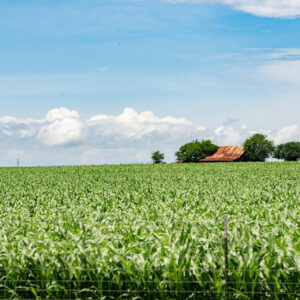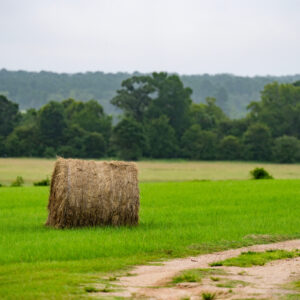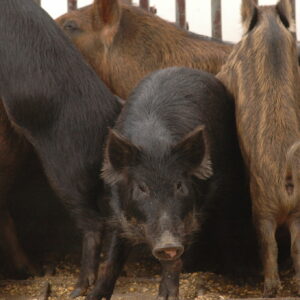INTRODUCTION
Cotton performance trials were conducted during 2001 at the Lubbock, Halfway, and Pecos Texas Agricultural Experiment Stations. The Lamesa dryland variety test was planted on the AG-CARES research farm. An irrigated variety test was also grown near Tulia on the Dale Swinburn farm.
The Lubbock Station tests were planted in either Amarillo or Olton soils, the Halfway Station tests in Pullman clay loam soils and the Pecos Station tests were planted in Hoban silty clay loam soils.
The 2001 season began with considerable promise due to the excellent soil moisture conditions from winter and early spring rains. Also, a colder winter than those the past four years promised to provide some relief from pests. Unfortunately, from June to September, rainfall amounts were insignificant resulting in extremely dry, stressful conditions. Significant rainfall did not occur again until November, providing mostly ideal conditions for harvest operations. Severe storms, mostly in May, resulted in accumulative acreage losses of over 1.3 million acres that were never replanted to cotton. Acres to be harvested dropped to 2.535 million acres from a planted base of 3.85 million acres. Yields from the remaining dryland acres, mainly to the south of Lubbock, lacking any appreciable rainfall through the summer, were reduced to very low levels. Irrigated producers were hard pressed to keep up with irrigation demands with the added problem of low cotton prices and high energy costs. Both disease and insect problems were minimal this year.
Producers opted to reduce pest management costs this year, resulting in less than a 3rd of the more typical 900,000 acres being treated with Temik or a seed treatment for thrips. As it turned out, this was a year of severe thrips infestations with yield losses higher for this pest than any other. However, optimal early growing conditions between damaging weather systems provided conditions that minimized damage from these high thrips populations.
There were predictions of severe problems from cotton fleahoppers and plant bugs (Lygus hesperus and L. elisus), with early rains and lots of alternate weed hosts as a result of these rains. The absence of further seasonal rains and high heat stress, coupled with unusually high numbers of beneficial arthropods, may have been the cause of the absence of early problems from these pests. Plant bugs did eventually develop to levels of concern later in the season when boll protection was important.
Boll weevil winter survival was apparently reduced significantly due to low overwintering site temperatures associated with our coldest winter in five years. Emerging boll weevil numbers were the lowest observed since this pest invaded the High Plains and became established in 1993. The eradication program, starting its second full season of applications, was also a significant contributor to reduced boll weevil numbers in the three active zones. The remaining two High Plains zones initiated their programs in the fall, before economically damaging weevil infestations could develop. As a result, the boll weevil was relegated to a minor pest for the first time after six years as a primary pest.
False chinch bug numbers were significantly higher this year with stand losses occurring in some field margins. Once cotton began to square, false chinch bugs could be found beneath the bracts of squares in many fields. Observations by university entomologists and consultants again supported previous observations that this insect does not affect square retention.
Bollworm numbers were very low again this year, the lowest observed in over two decades (higher than last year but still at record low levels). Most fields treated for this pest were triggered by other pest problems. The greatly reduced corn acreage in the northern area again significantly reduced the magnitude of bollworm infestations in August.
Beet armyworm infestations were extremely light this season in stark contrast to last year. Early high trap catches and field infestations of beet armyworms initially caused concern, but record levels of beneficial arthropods, especially crab spiders, big-eyed bugs and minute pirate bugs, kept most infestations suppressed all season long.
Cotton aphids were practically nonexistent for much of the season, only developing very late infestations in October after their yield-reducing threat had passed. There were no reports of sticky cotton problems this year. High infestation levels of bandedwinged whiteflies, a sporadic pest, caused some concern early during the blooming period. Infestations developed in many fields in late July and August, especially in fields adjacent to sunflowers. Sunflowers appear to be an ideal whitefly host and with higher than normal acreage planted to this crop, higher whitefly problems could be expected. The absence of any research-backed thresholds or insecticide recommendations for this species made it difficult to provide management advice, but the final assessment was that their numbers were not sufficient to cause yield losses.
Overall, weather had the largest impact on harvested acres, final yields and cost of production. 2001 will go into the record books of being one of the lightest if not the lightest insect problem year since 1975.
ACKNOWLEDGMENTS
Fiber Properties were determined at the International Textile Center, Texas Tech University with financial support from the Texas Food and Fiber Commission and the Plains Cotton Improvement Program.
Financial assistance was provided by the Cotton Incorporated State Support Program for the Seed Treatment tests. The financial and moral support provided by the Plains Cotton Improvement Program is invaluable as we strive to become a consistent supplier of high quality cotton.
Plot harvesting, sample ginning, and data collection were performed by: Monica Bellow, Billy Chaffin, Andy Cranmer, Leigh Dawdy, Erik Everitt, Johnny Fuentes, Mark Hall, Casey Hardin, Ryan Heinrich, Kim Kelton, Brenda Lauterbach, Shauna Lewis, Valerie Morgan, Mary Payne, Jody Rowland, Lyndon Schoenhals, Joel Smith, Anna Talbot, Craig Tally, Raymond Tillis, Jason Trammell, Paul Ward, and Leslie Wells. Sheryl Smith provided secretarial assistance with the typing and editing of the numerous tables associated with this report. Valerie Morgan and Lyndon Schoenhals performed table preparation and statistical analyses. Dr. Jim Leser made a significant contribution of material for inclusion in the Introduction. The assistance of all of these people is gratefully acknowledged and truly appreciated.





